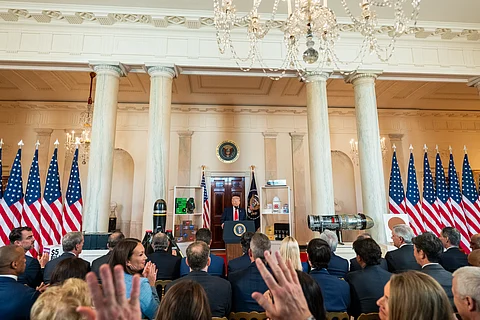

The U.S. economy added only 73,000 jobs in July, falling short of expectations and highlighting the growing impact of President Donald Trump’s escalating trade war on the labor market.
Economists had forecasted approximately 110,000 new jobs, but the July figure of 73,000 marked a significant slowdown, according to the Labor Department’s Bureau of Labor Statistics.
The unemployment rate climbed to 4.2% from 4.1% in June, reflecting a less dynamic labor market.
Revisions to prior months’ data further underscored the weakening trend, with May and June job gains reduced by a combined 258,000, bringing May’s total to 19,000 and June’s to 14,000.
The three-month average employment gain dropped to 35,000, a sharp decline from the 123,000 average earlier in the year, signaling hiring is stalling as businesses grapple with trade-related uncertainties.
Healthcare and social assistance sectors led job gains, adding 55,000 and 18,000 jobs, respectively, in July.
However, federal employment continued to contract, with 12,000 jobs cut last month, contributing to a loss of 84,000 federal positions since January.
The trade war’s influence was evident as tariffs, including a recent 35% duty on Canadian goods, began driving up prices and disrupting business planning, prompting firms to curb hiring to manage costs.
The weak jobs report has intensified calls for the Federal Reserve to reconsider its stance on interest rates, which remained unchanged at 4.25%-4.50% this week.
Fed Chair Jerome Powell emphasized the need to assess the full impact of tariffs on inflation and economic activity before adjusting rates.
Meanwhile, economic growth showed mixed signals, with GDP rising 3% in the second quarter after a 0.5% decline earlier, driven by businesses adjusting import strategies around tariff policies.
The sluggish 1.2% growth in the first half of 2025, down from 2.5% in 2024, underscores the broader economic challenges posed by ongoing trade tensions.